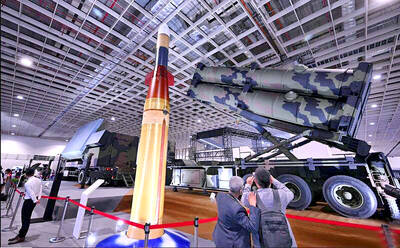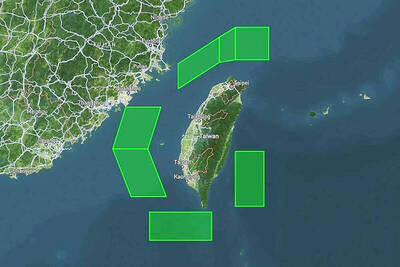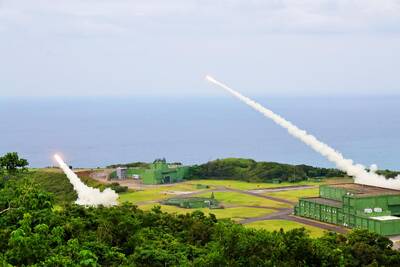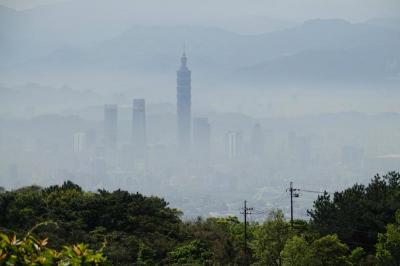The army is scheduled to receive this year the first batch of newly ordered 155mm M109A6 Paladin self-propelled howitzers from the US, defense sources said yesterday.
The M109A6 cannon, which the US agreed to sell to Taiwan two years ago, is the most technologically advanced artillery in service with the US army.
It is also to become the best of its kind in the Taiwan army, whose artillery is largely obsolete by world standards.
The army has ordered more than 140 M109A6s from the US at a cost of around NT$10 billion. It will be the largest arms purchase that the army has made in recent years.
The deal was approved by Washington two years ago and the first batch of cannons are scheduled to be delivered to the army this year.
The M109A6 is the latest version of the 155mm M109-series self-propelled howitzers which the US has developed since the 1950s.
Taiwan's army has earlier versions of the M109, but they are no match for the A6 model.
The earlier M109s, already in service with the army, include the A1B, A2, and A5 types. They are used mainly by the armored brigades. Most of these howitzers have been operational for more than two decades.
The A6 type is much superior to previous models, primarily because of improvement in the electronic systems.
In a book introducing the weapon systems of Taiwan's military, Eleven Jan (詹皓), a senior editor with Defense Technology Monthly magazine, says that the new howitzer can serve not only as a cannon but also as a command vehicle.
"One M109A6 can provide fire command and control to several A5 models at the same time. It can operate independently without the help of forward observers," Jan said.
"The system boasts a much greater survivability in battlefield than previous M109s with its ability to shoot from the move and to `shoot and scoot,''' Jan said. "That the army chooses the M109A6 as its major artillery in the future indicates a trend toward automation."
The army has confirmed that it plans to buy more technologically advanced weapon systems which feature higher automation and require fewer men to operate.
The M109A6, for example, needs only four crew, while previous M109 models such as the A2 and A5 require six soldiers to operate.
The army is also eyeing another hgihly automatic weapons system, the M1A2 main battle tank.
The US has agreed in principle to sell around 50 M1A2s to Taiwan, but the deal has been postponed due to a lack of money on the Taiwan side, defense sources said.
Over the next 10 years, sources said, the navy will get the lion's share of defense budgets.
That will force the army to delay some of its major armament procurement plans, sources said.

Taiwan is to commence mass production of the Tien Kung (天弓, “Sky Bow”) III, IV and V missiles by the second quarter of this year if the legislature approves the government’s NT$1.25 trillion (US$39.78 billion) special defense budget, an official said yesterday. Commenting on condition of anonymity, a defense official with knowledge of the matter said that the advanced systems are expected to provide crucial capabilities against ballistic and cruise missiles for the proposed “T-Dome,” an advanced, multi-layered air defense network. The Tien Kung III is an air defense missile with a maximum interception altitude of 35km. The Tien Kung IV and V

The disruption of 941 flights in and out of Taiwan due to China’s large-scale military exercises was no accident, but rather the result of a “quasi-blockade” used to simulate creating the air and sea routes needed for an amphibious landing, a military expert said. The disruptions occurred on Tuesday and lasted about 10 hours as China conducted live-fire drills in the Taiwan Strait. The Civil Aviation Administration (CAA) said the exercises affected 857 international flights and 84 domestic flights, affecting more than 100,000 travelers. Su Tzu-yun (蘇紫雲), a research fellow at the government-sponsored Institute for National Defense and Security Research, said the air

Taiwan lacks effective and cost-efficient armaments to intercept rockets, making the planned “T-Dome” interception system necessary, two experts said on Tuesday. The concerns were raised after China’s military fired two waves of rockets during live-fire drills around Taiwan on Tuesday, part of two-day exercises code-named “Justice Mission 2025.” The first wave involved 17 rockets launched at 9am from Pingtan in China’s Fujian Province, according to Lieutenant General Hsieh Jih-sheng (謝日升) of the Office of the Deputy Chief of the General Staff for Intelligence at the Ministry of National Defense. Those rockets landed 70 nautical miles (129.6km) northeast of Keelung without flying over Taiwan,

A strong continental cold air mass is to bring pollutants to Taiwan from tomorrow, the Ministry of Environment said today, as it issued an “orange” air quality alert for most of the country. All of Taiwan except for Hualien and Taitung counties is to be under an “orange” air quality alert tomorrow, indicating air quality that is unhealthy for sensitive groups. In China, areas from Shandong to Shanghai have been enveloped in haze since Saturday, the ministry said in a news release. Yesterday, hourly concentrations of PM2.5 in these areas ranged from 65 to 160 micrograms per cubic meter (mg/m³), and pollutants were